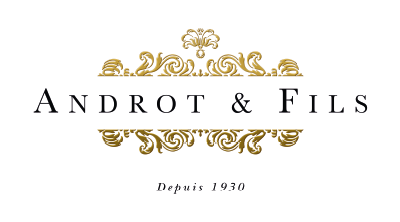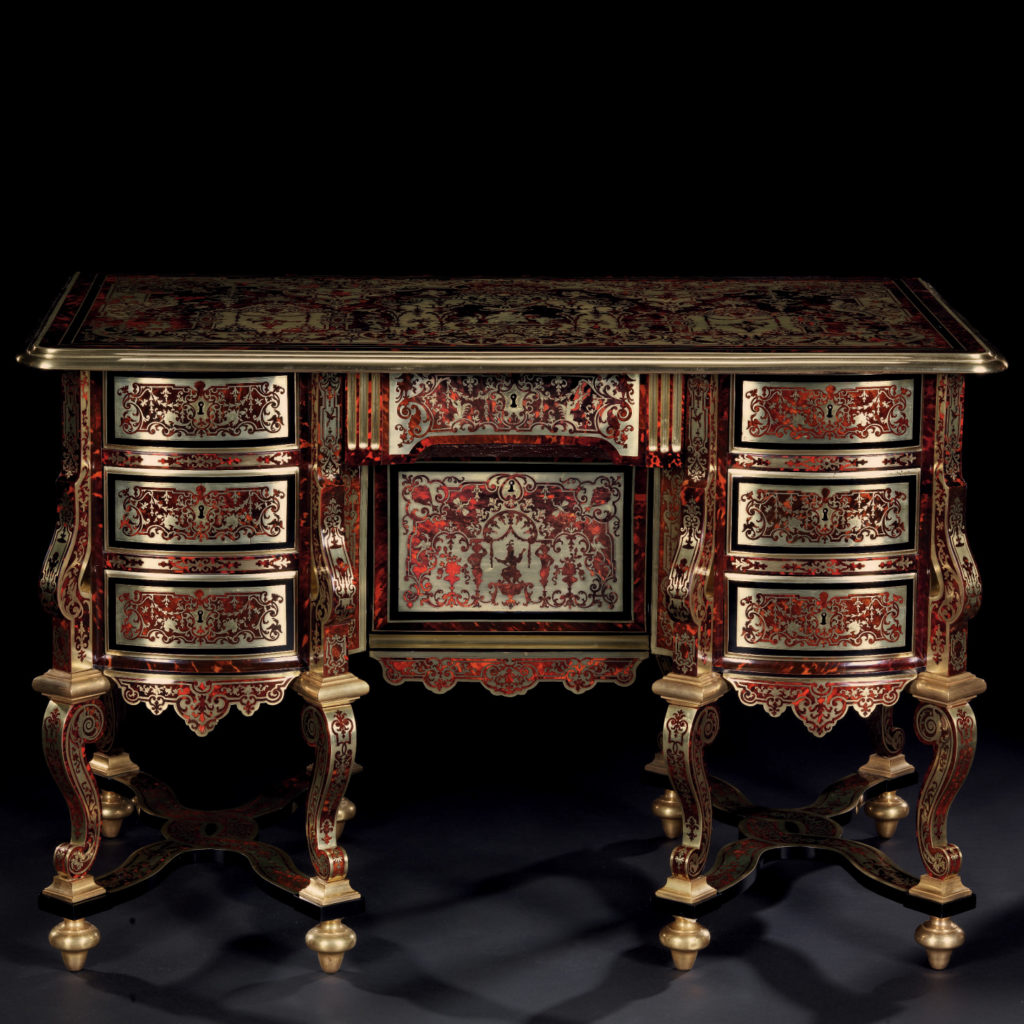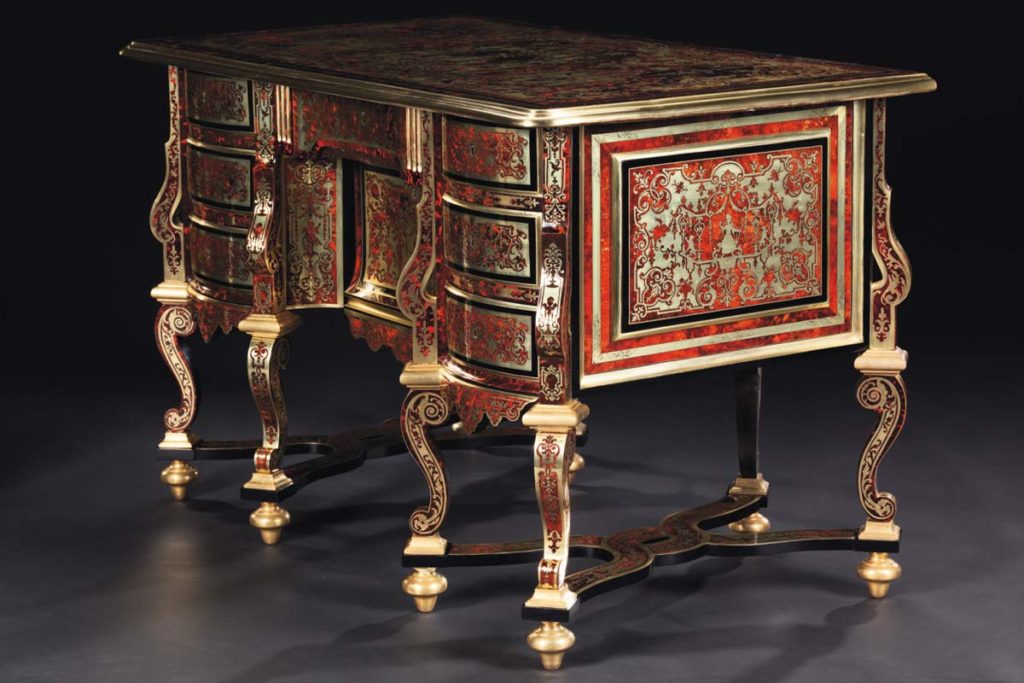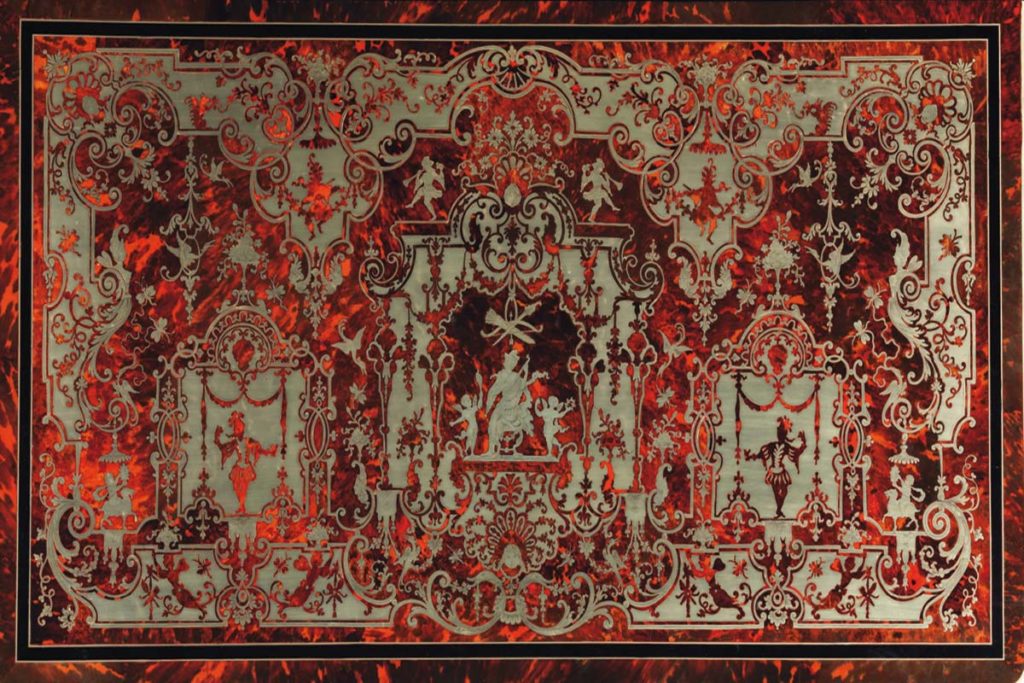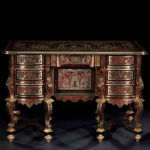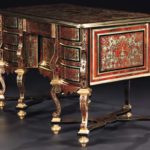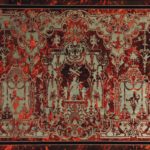Bureau with 8 legs said to be “Mazarin”
The eight-legged bureau is one of the jewels of 17th century furniture. It is incorrectly referred to as “Mazarin” because it only appears circa. 1670, well after the death of the cardinal in 1661.
It usually has two lateral boxes with three drawers, supported by four legs joined by spacers in X or H shapes. The central box is surmounted by a seventh drawer, placed above a panel.
This design is very versatile as it can be used as a table or a desk. But its elaborate ornamental decoration soon elevated it to becoming more suited to ceremonies and formal occasions.
Notably our bureau is aligned with an exceptional series that can be found at the Château de Versailles, the Hermitage Museum in St. Petersburg, the Petit Palais in Paris, the Musée de Rouen and the Bayerisches National Museum in Munich.
The top panel is completely decorated in gilt bronze with an ingot surround. And the entire piece is adorned with Boulle marquetry, (shell on brass, the red tint is obtained by overlaying a tinted layer on the reverse of the shell).
The arabesque motifs and characters were inspired by Jean Bérain, designer for the Menus Plaisirs du Roi, whose work influenced decorative arts throughout Europe.
Due to its ornamental features and the exceptional quality of its production, this bureau is comparable to those produced by Nicolas SAGEOT, a master cabinetmaker whose workshop was one of the most important of its time.
Nicolas Sageot (1666-1731)
Born in Sermaize en Champagne, (now Sermaize les Bains), Nicolas Sageot moved to Faubourg Saint-Antoine, the Parisian cabinetmaker district. He worked there as a freelancer later acquiring his mastery in 1706. He produced wardrobes, dressers and desks, using traditional Boulle marquetry in a Bérain design, which brought him a great deal of wealth. He retired in 1720 with a tidy fortune.
He was one of the first master craftsmen to stamp some of his work, and our desk has characteristics undeniably similar to NS stamped copies. Nevertheless, it is difficult to give direct credit as marquetry craftsmen and cabinetmakers from Faubourg Saint-Antoine worked in close collaboration. The first provided the last with the panels they needed for their furniture to then produce the casing. The fact remains that this piece was certainly produced in a specialist workshop in close proximity to Nicolas Sageot.
